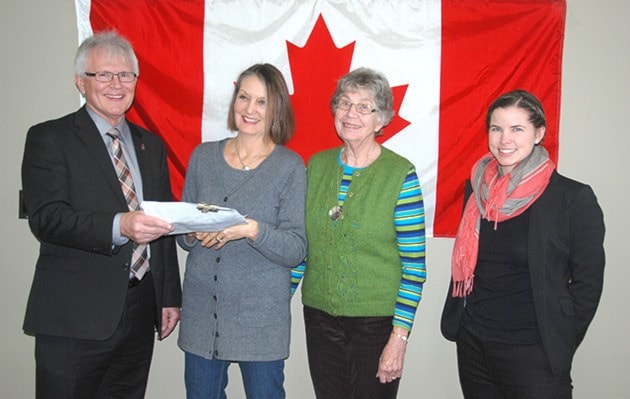Two local activists presented a petition to address federal electoral reform to Kootenay-Columbia MP Wayne Stetski on Wednesday afternoon at his constituency office.
Dr. Joyce Green and Anne Beurskens have been collecting signatures for a petition to change the federal electoral system to proportional representation from the first-past-the-post system, which is the voting method currently in place.
Both Dr. Green and Beurskens said that a proportional system would fairer and create a more diverse Parliament, which would encourage parties to put aside partisan bickering and work together.
Beurskens speaks from experience, having voted in a proportional system when she lived in The Netherlands before emigrating to Canada.
The Netherlands, which has a bicameral system, has a proportional representation in the Tweede Kamer—the Dutch House of Representatives—which has 150 seats where members are elected for a four year term.
"What is right with the other system [proportional] is that people do better teamwork," said Beurskens. "They speak together, they talk together, if there is someone that they don't really agree with in parliament, they still are able to work it out. They have learned that over the years."
The first-past-the-post system in Canada has led to the rise of bitter divisional politics, said Dr. Green as she addressed Stetski.
"It [proportional representation] would erode the absolutely toxic partisanship in the House of Commons and increase the likelihood of parties working together collaboratively," she said, "and that would be in the positive interests of legislation and public policy, so we very much encourage you to take this forward and we know that your leader is onside with proportional representation and we so appreciate the support."
Stetski, a member of the NDP, noted that proportional representation was a part of the his party's platform during the election. Though the House of Commons has only been in session for a seven days, the issue has come up and it remains to be seen how the Liberal majority government will tackle it.
While Stetski, Dr. Green and Beurskens favour a proportional representation system, they also warn against the challenges of preferential balloting.
Dr. Green noted that there is still the potential to 'game the system' with preferential balloting but boils the proportional representation down to one simple statement.
"If this is going to work, it has to be really simple, really straightforward," she said. "The simplest concept is that if 30 per cent of Canadians vote for any particular party, you end up with 30 per cent of the seats in Parliament.
"That's the simplest way to make proportional representation work."
